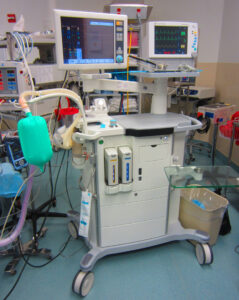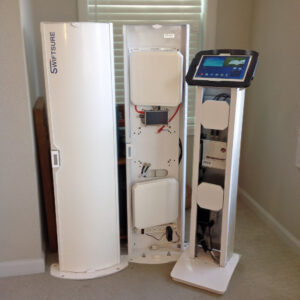![]() May 31, 2016 – The results are back for the Mayo Clinic emergency department’s passive RFID-based resource management system.
May 31, 2016 – The results are back for the Mayo Clinic emergency department’s passive RFID-based resource management system.
The solution boosted operational efficiency while improving workflow and patient care at the St. Marys Hospital ER, the clinic’s largest. The solution uses passive radio frequency identification technology to track equipment, patients and providers.
The Mayo Clinic recently published its assessment of the RFID project, which was fully integrated into the ER in Q4, 2015. (Read the Harvard Business Review article here.)

RFID-based location systems track equipment and people
The clinic turned the ER into a living lab to learn about the system’s effectiveness and impact. An array of overhead readers collects data from RFID chips in wearables and tags to create a real-time location system (RTLS).
The clinic used an interdisciplinary, interdepartmental approach to designing and implementing the solution – a critical step in planning and deploying any successful resource management system.
How RFID checked out
ER staff showed some resistance to being tracked – a common reaction among workers concerned about surveillance and its possible misuse, such as in job reviews. Worries about privacy faded with reassurance that data would not be used against personnel and that the system was, in fact, a tool to help them perform their duties and provide better care.
Most patients, on the other hand, did not express concern about being tracked, with most already assuming they were.
Many trials and real-life implementations have shown that RFID has no affect on devices or overhead communications systems. The clinic’s testing confirmed that the technology did not interfere with ECG machines, monitors or other equipment, and did not disrupt communications.
Among the RFID system’s benefits were:
- Reduced search time for staff, patients and equipment
- Better data capture of CMS-reported metrics, such as wait times and length of stay
- Retrospective mapping of adverse events
- Identification of system constraints in patient flow and equipment location
- Integration with existing IT systems
The RFID initiative’s team included doctors, nurses, scientists, engineers and IT personnel. It gained input from all stakeholders invested in change management, risk mitigation, compliance and process improvement – from HR and clinical practice to legal and compliance.
This year the Mayo Clinic plans to use the system to automate reporting to government agencies, and to trace staff exposed to infectious diseases. It also hopes to expand it to general hospital use.
Virtual RTLS is a healthy option
RTLS can be complex and costly. With hospitals operating on thin margins, these systems are often difficult to justify from the perspective of return on investment.

Strategically placed RFID portals provide virtual RTL of equipment containing ePHI
In less frenetic hospital environments, an affordable, effective virtual RTLS can achieve a healthy ROI. It uses passive UHF readers at select read points to track equipment and people to specified locations – instead of continuously tracking actual movement.
Virtual RTLS provides automatic equipment identification with tag data containing a universal ID (UID) for use within and between departmental information management systems. It also collects high-quality data for CMS and helps providers comply with Joint Commission and HIPAA regulations regarding equipment cleaning, maintenance and status.
A virtual RTLS using passive RFID automates data collection and improves risk mitigation by tracking and managing the full lifecycle of assets that contain sensitive electronic protected health information (PHI or ePHI).
Whether opting for an RTL system or a virtual RTL solution, healthcare organizations can avoid costly missteps and obtain better results if they first consult a systems integrator with expertise in RFID-based asset and workflow management.
